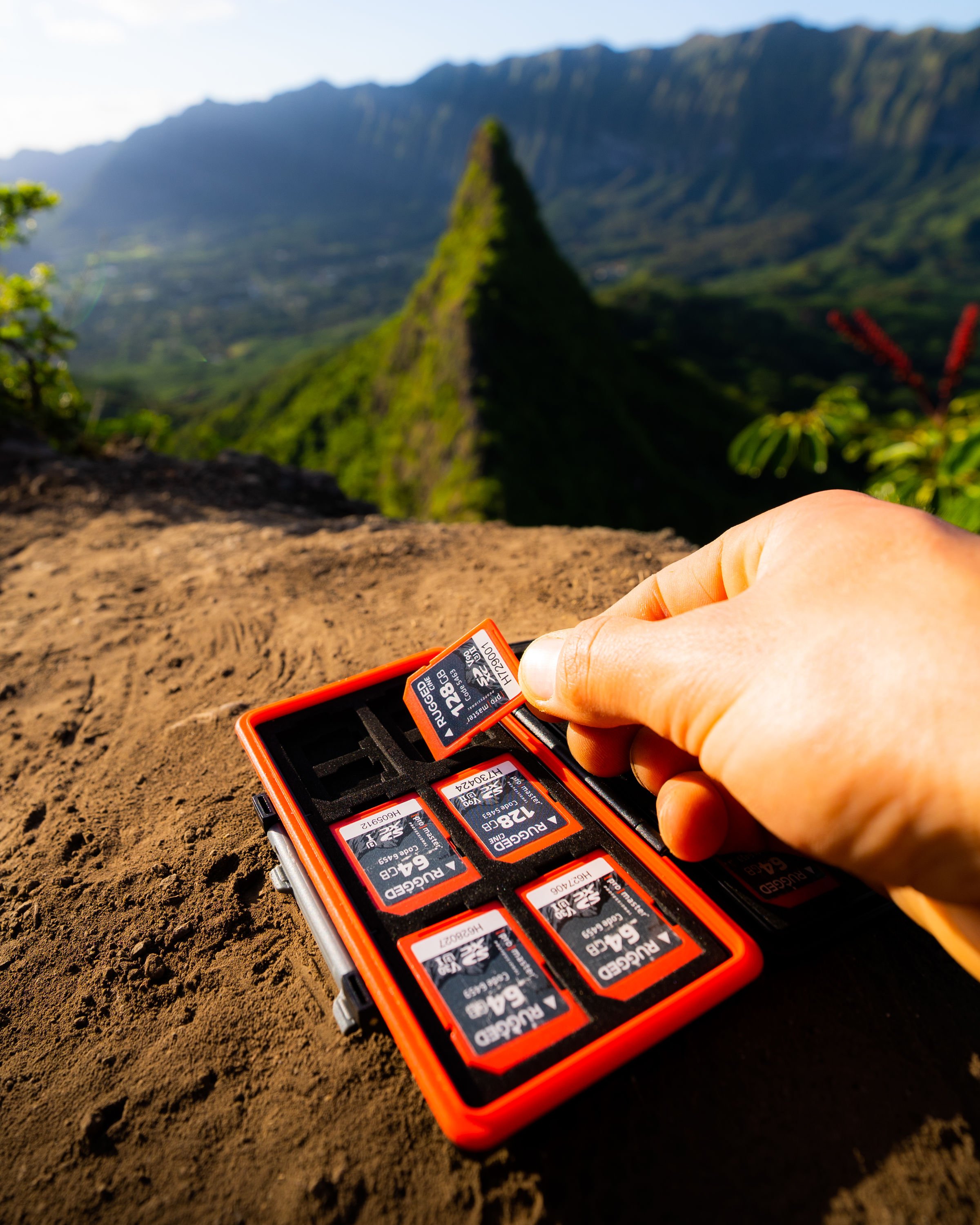Maintaining Memory Cards
We covered how selecting the right memory card can make all the difference for a successful shoot. Now that you have the right memory card in hand, how can you maintain it for continued use?
Memory cards begin to degrade over time for a few reasons. One reason is improper storage. Many memory cards degrade when exposed to the elements. If you think you’ll be using a memory card in extreme temperatures or weather conditions, we recommend the ProMaster Rugged line of cards. Loss of data can also occur if the card is stored improperly, leading to physical damage. Using the right case to store your cards when not in use can make all the difference.
ProMaster memory cards are covered by a lifetime warranty, but that doesn’t mean you shouldn’t take these steps to get the most out of the memory card you already have.
These are some best practices to preserve your memory card:
Storage
While it may seem obvious, it's best practice to keep your memory cards clean, dry, and avoid bending your cards. Store them in a case when not in use and store them at room temperatures whenever possible, even when using a card designed to withstand the elements.
Formatting
Before you start taking photos, you’ll need to format the card when you insert it into your camera. Depending on your gear setup, it may make sense to use a specific card for each camera since each card is formatted to the specifications of that device. Keep in mind that formatting your card will wipe all of its files. Only format a card once you’re sure the data is backed up to another source.
Handling
Besides being careful not to bend or drop your card, make sure to use clean, dry hands when handling the card or removing it from your camera. Eject and insert cards according to directions, and do not remove the card too soon. Removing the card from a camera or card reader before files are fully written can disrupt the file structure and lead to file damage. Before ejecting the card, give your camera 30 seconds to finish writing the files.
Transferring
After you’re sure the camera has finished writing the files, you can transfer your images to your computer. You have the option to connect your camera straight to the computer and transfer from there, but card readers are often a faster option. When using a card reader, make sure the file transfer is complete before removing the card from the reader.
Errors
Error messages can still happen even if you’re careful. If you see a card error message pop up on your camera, switch off your camera and remove the card. Your best bet at this point is to use a card reader and recovery software back home to see if any images can be saved. If you're not comfortable using recovery software yourself, most local camera stores offer memory recovery as a service.
For SD and microSD cards you have the option to try cleaning the card at home, using items you probably have at hand. This is a simple step you can take if you’re having issues or know your SD or microSD card has been in a gritty situation.
Use compressed air or a camera lens blower to clear away any dust or smaller particles from the card.
Dip a cotton swab, or ideally a foam bud, into +90% isopropyl alcohol (IPA) and gently clean the connectors.
Clean the rest of your card using isopropyl alcohol.
Let your card dry completely before inserting it into your camera or card reader.
Most of the issues that occur with memory cards are avoidable by following simple best practices. While we love helping out our customers, we’d rather you be able to keep using your card for future shoots! Still have questions? Reach out to an expert at ProMaster. And make sure to check out the full line of ProMaster memory cards online.










